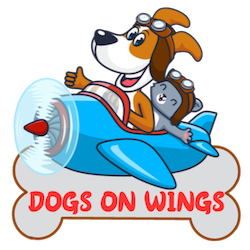Dog body language is fascinating and reveals much about what our four-legged friends are feeling. Often, they communicate their emotions subtly, using facial expressions, ear positions, and even tail movements.
For pet owners, understanding these signals can make a significant difference in their relationship with their pets. This knowledge can be particularly useful to know how to react in various situations and provide your furry friend with more comfort and security.
Want to better understand what your dog is trying to tell you? Then keep reading to discover how to interpret every movement, glance, and behavior to strengthen the bond between you!
What is Dog Body Language?
Dog body language is the primary way dogs communicate. Unlike humans, who rely on words, dogs use movements, facial expressions, postures, and sounds to express their feelings and intentions.
They communicate joy, fear, curiosity, submission, and even aggression through their bodies. As highly social beings, dogs have developed this language to interact with both other animals and humans.
These pets are masters at picking up on human emotions, but unfortunately, we are not always as skilled at understanding what they are trying to tell us. This can lead to misunderstandings, resulting in undesirable or misinterpreted behaviors. Therefore, it is essential for pet owners to learn to read these signals.
Furthermore, understanding dog body language can improve your pet’s quality of life. When you recognize signs of discomfort, stress, or anxiety, you can act quickly to resolve the situation, preventing your dog from suffering or feeling insecure.
Key Signs of Canine Body Language
1. Dog Tail Body Language
The tail is one of the most evident indicators of dog body language. However, it is a common misconception that a wagging tail always means the dog is happy. The position and movement of the tail convey more complex information. Let’s understand this better:
- A fast, wide wag: This is a sign of joy, excitement, or enthusiasm. Your dog may be very happy to see you or excited to play;
- Tail held stiff and high: When the tail is erect and still, it can indicate alertness or even an aggressive posture. The dog is paying attention to something and is prepared to act, either to protect its territory or because it feels threatened;
- Tail low or tucked between the legs: This is a classic sign of fear, submission, or anxiety. When a dog pulls its tail in between its hind legs, it is showing that it feels intimidated or uncomfortable with its surroundings;
- Slow wagging tail: This may be a sign of uncertainty or indecision. The dog is trying to understand what is happening before deciding how to react.
2. Dog Ear Body Language
A dog’s ears are extremely expressive and change position depending on their emotional state. They can provide valuable clues about how your pet is feeling.
- Ears forward and upright: Indicate that the dog is curious, interested, or focused on something. It is paying attention to a stimulus;
- Ears pulled back and down: When the ears are lowered, it may be a sign of fear, discomfort, or submission. Your dog may be trying to protect itself or show that it is not a threat;
- Ears in a neutral position: Show that the dog is relaxed and in a calm state. If your dog’s ears are like this, it is likely comfortable in its environment.
3. Facial Expressions
Just like humans, dogs use their facial expressions to communicate. Observing the eyes, mouth, and even eyebrows can provide clues about what your dog is feeling.
- Wide or fixed eyes: Indicate alertness or nervousness. If a dog is staring intensely, it may be a sign of challenge or a way to assess a potential threat;
- Squinting eyes: A sign of relaxation and trust. Your dog feels comfortable by your side and is at ease;
- Mouth open with the tongue out: Generally indicates that the dog is happy and relaxed. This can also be a mechanism to help regulate body temperature on hot days.
Body Postures
1. Relaxed Body
When a dog’s body is loose and relaxed, it feels safe and comfortable. This is often observed when it is lying on its side or back, exposing its belly. This behavior indicates that the dog completely trusts its environment and the people around it.
Exposing the belly: Besides being a sign of trust, it is also an invitation for belly rubs. However, in some cases, the dog may expose its belly as a sign of submission.
2. Tense and Stiff Body
If a dog feels threatened or nervous, it may stiffen its body, keep its legs firmly on the ground, and lean slightly forward. This behavior shows that it is on high alert, ready to react to a threat. Understanding dog body language is key in these situations, as it’s important not to attempt to pet a dog with a stiff body, since it may feel threatened and react aggressively.
3. Playful Posture
When your dog lowers the front part of its body while keeping its rear end raised, it is inviting you to play. This is a classic play bow, often accompanied by quick movements and tail wagging. It shows that the dog is in a good mood and wants to interact positively.
Common Behaviors and Their Meanings
1. Barking
Barks vary in tone and intensity, and understanding these sounds can help decipher what your dog is trying to communicate.
High-pitched, rapid barks: May indicate excitement or joy.
Low-pitched, continuous barks: Indicate that the dog is on alert, trying to warn of a potential danger.
2. Growling
Growling is not always a sign of aggression. Often, it is a way for the dog to communicate that it is uncomfortable with a situation or needs space. For example, it may growl when eating or feeling threatened.
3. Excessive Licking
Licking can be a sign of affection, but when done compulsively, it may indicate stress, anxiety, or even a health issue. Pay attention if this behavior becomes constant.
How Dog Body Language Can Help with Training
By understanding dog body language, you can improve the effectiveness of training. For example, if you notice that your dog is stressed or uncomfortable, it’s better to take a break and return when it is more relaxed. Reinforcing positive behaviors at the right moment is essential for good training.
When to Consult a Veterinarian or Behaviorist
Sudden changes in dog body language may indicate health problems. If your dog is acting strangely, avoiding interactions, or showing signs of aggression without apparent reason, it is advisable to seek professional help. A behaviorist can help identify the cause of the behavior and offer solutions.
Tips for Better Communication with Your Dog
- Observe the context: Always consider the environment and situation before interpreting the signals;
- Respect your dog’s space: If it is trying to move away, do not insist on interacting;
- Use positive reinforcement: Rewarding good behaviors helps strengthen trust and communication between you and your dog.
Final Thoughts on Dog Body Language
Dog body language is the key to understanding what your pet is truly feeling. By paying attention to its movements, expressions, and behaviors, you can communicate better with it, build a stronger bond, and ensure that it is always happy and safe.
So, the next time you look at your dog, observe more closely. With this knowledge, you can provide a happier and healthier life for your best friend!

